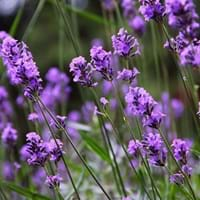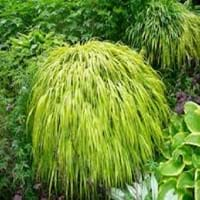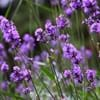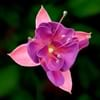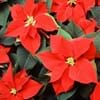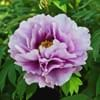Life Span
Perennial
Perennial
Type
Herb, Tender Perennial
Grass
Origin
Mediterranean
Japan
Types
Lodden Blue, Royal Velve, Melissa, Sachet, Sharon Roberts etc
Not Available
Number of Varieties
Not Available
Habitat
Grassland, Hillside, Rocky areas
meadows, Riverbanks, Wet Woods
USDA Hardiness Zone
8-10
5-9
Sunset Zone
4, 5, 6, 7, 8, 9, 10, 11, 12, 13, 14, 15, 16, 17, 18, 19, 20, 21, 22, 23, 24
1a, 1b, 2a, 2b, 3a, 3b, 4, 5, 6, 7, 8, 9, 10, 11, 12, 13, 14, 15, 16, 17, 18, 19, 20, 21, 22, 23, 24
Habit
Clump-Forming
Clump-Forming
Flower Color
Blue Violet
Blue Violet
Flower Color Modifier
Not Available
Bicolor
Leaf Color in Spring
Sea Green, Gray Green
Yellow, Green, Light Green
Leaf Color in Summer
Sea Green, Gray Green
Light Green
Leaf Color in Fall
Sea Green, Gray Green
Orange, Yellow green, Orange Red
Leaf Color in Winter
Gray, Silver
Green, Dark Green, Not Available
Leaf Shape
Oblong
Oblovate
Plant Season
Spring, Summer, Fall, Winter
Spring, Summer, Fall
Sunlight
Full Sun, Partial Sun
Full Sun, Partial Sun, Partial shade
Type of Soil
Clay, Loam, Sand
Loam
The pH of Soil
Neutral, Alkaline
Acidic, Neutral
Soil Drainage
Well drained
Well drained
Bloom Time
Indeterminate
Late Summer, Early Fall, Fall
Tolerances
Drought, Salt
Dry soil, Shallow soil
Where to Plant?
Ground
Ground
How to Plant?
Seedlings, Stem Planting, Transplanting
From Rhizomes
Plant Maintenance
Medium
Medium
Watering Requirements
Does not require lot of watering, Over-watering can cause leaf problems or root diseases, Water when soil is dry
Keep ground moist
In Summer
Lots of watering
Lots of watering
In Spring
Moderate
Consistently
In Winter
Average Water
Adequately
Soil pH
Neutral, Alkaline
Acidic, Neutral
Soil Type
Clay, Loam, Sand
Loam
Soil Drainage Capacity
Well drained
Well drained
Sun Exposure
Full Sun, Partial Sun
Full Sun, Partial Sun, Partial shade
Pruning
Do not prune during shooting season, Prune after flowering, Prune if you want to improve plant shape, Prune in late summer or fall, Prune in spring, Prune to control growth
Prune grass to maintain level, Prune if you want to improve plant shape
Fertilizers
All-Purpose Liquid Fertilizer
organic fertlizers
Pests and Diseases
Armillaria mellea, Cecidomia, Cuscuta, Gray mold, Meligetes, Phoma, Rhizoctonia Root Rot, Sophronia Humerella
Not Available
Plant Tolerance
Drought
Shade areas, Shallow soil, Wet Site
Flowers
Yes
Insignificant
Flower Petal Number
Single
Single
Fragrant Bark/Stem
Yes
No
Foliage Texture
Fine
Medium
Foliage Sheen
Matte
Matte
Attracts
Butterflies
Ants, Beetles, Caterpillar
Allergy
Diarrhea, Headache, Itchy eyes, Nausea, Vomiting
allergic conjunctivitis, Asthma, Rash
Aesthetic Uses
Beautification, Bouquets, Showy Purposes, Used for decorating walls, fences, gates, hedges, etc.
Beautification, Ground Cover
Beauty Benefits
Not Available
Not Available
Environmental Uses
Air purification
Provides ground cover, Shadow Tree
Medicinal Uses
Acne, Skin irritation
Acne, Aging, Laxative
Part of Plant Used
Flowers
Leaves
Other Uses
Oil is used for aromatherapy, Oil is used in perfume, soaps, creams, etc., Showy Purposes, Used As Food, Used as Ornamental plant, Used for fragrance
Can be made into a herbal tea, Showy Purposes
Used As Indoor Plant
No
Sometimes
Used As Outdoor Plant
Yes
Yes
Garden Design
Container, Herb / Vegetable, Mixed Border, Rock Garden / Wall
Container, Edging, Mixed Border, Rock Garden / Wall, Water Gardens
Botanical Name
LAVANDULA multifida
HAKONECHLOA macra 'Aureola'
Common Name
Lavender
Golden Japanese Forest Grass, Hakone Grass
In Hindi
Lavender
जापानी वन घास
In German
Lavendel
Japanische gras
In French
Lavande
Forêt herbe japonaise
In Spanish
Lavanda
forestales hierba japonesa
In Greek
λεβάντα
Ιαπωνικά γρασίδι δάσος
In Portuguese
Lavanda
floresta grama japonês
In Polish
Lawenda
Japoński las lato
In Latin
Lavendula
Forest gramina Italica
Phylum
Tracheophyta
Angiosperms
Class
Magnoliopsida
Monocots
Genus
Lavandula
Hachanechloa
Clade
Angiosperms, Asterids, Eudicots
Angiosperms
Tribe
Lavanduleae
Not Available
Subfamily
Nepetoideae
Arundinariinae
Number of Species
Not Available
Season and Care of Lavender and Japanese Forest Grass
Season and care of Lavender and Japanese Forest Grass is important to know. While considering everything about Lavender and Japanese Forest Grass Care, growing season is an essential factor. Lavender season is Spring, Summer, Fall and Winter and Japanese Forest Grass season is Spring, Summer, Fall and Winter. The type of soil for Lavender is Clay, Loam, Sand and for Japanese Forest Grass is Loam while the PH of soil for Lavender is Neutral, Alkaline and for Japanese Forest Grass is Acidic, Neutral.
Lavender and Japanese Forest Grass Physical Information
Lavender and Japanese Forest Grass physical information is very important for comparison. Lavender height is 45.70 cm and width 30.50 cm whereas Japanese Forest Grass height is 30.50 cm and width 30.50 cm. The color specification of Lavender and Japanese Forest Grass are as follows:
Lavender flower color: Blue Violet
Lavender leaf color: Sea Green and Gray Green
Japanese Forest Grass flower color: Blue Violet
- Japanese Forest Grass leaf color: Yellow, Green and Light Green
Care of Lavender and Japanese Forest Grass
Care of Lavender and Japanese Forest Grass include pruning, fertilizers, watering etc. Lavender pruning is done Do not prune during shooting season, Prune after flowering, Prune if you want to improve plant shape, Prune in late summer or fall, Prune in spring and Prune to control growth and Japanese Forest Grass pruning is done Prune grass to maintain level and Prune if you want to improve plant shape. In summer Lavender needs Lots of watering and in winter, it needs Average Water. Whereas, in summer Japanese Forest Grass needs Lots of watering and in winter, it needs Adequately.
